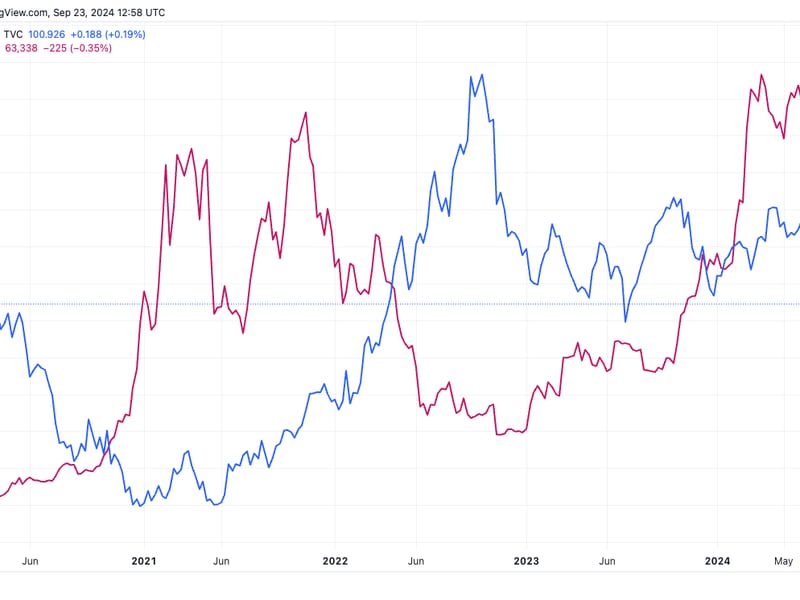
The Chicago Fed’s National Financial Conditions Index (NFCI) offers a weekly update on U.S. financial conditions across money markets, debt and equity markets, and the traditional and shadow banking systems. The NFCI is a valuable tool for assessing the health of financial markets, providing insights into liquidity, credit availability, and market risk. The index is structured so that a negative NFCI value indicates looser-than-average financial conditions, suggesting an environment where liquidity is more readily available. Conversely, a positive value indicates tighter-than-average conditions, where access to capital becomes more restrictive.
For the week ending Sept. 13, the NFCI registered at -0.56, indicating that financial conditions eased even further from the already looser than average level of the previous week. This level of financial ease hasn't been seen since November 2021, a period during which bitcoin (BTC) reached its 2021 cycle high of $69,000.
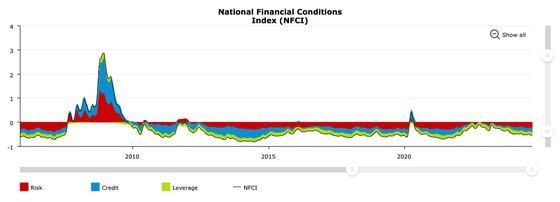
A noteworthy analysis on the relationship between the NFCI and bitcoin was recently shared by Fejau, host of the Forward Guidance Podcast. In an X thread, Fejau pointed out the negative correlation between the NFCI and bitcoin, arguing that looser financial conditions often act as a tailwind for risky assets. According to Fejau, when financial conditions loosen, easing increases, leading to a risk-on environment where speculative assets, including bitcoin, tend to rally.
Fejau’s analysis traces this negative correlation across several market cycles. In 2013, as financial conditions eased, bitcoin surged from around $100 in July to over $1,000 by November. This coincided with the NFCI index registering a low of around -0.80, indicating significantly looser than average financial conditions.
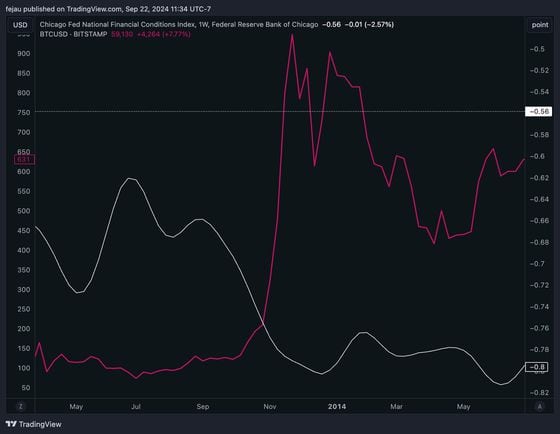
Similarly, in 2017-2018, the loosening of financial conditions coincided with bitcoin's dramatic rise from $2,000 to $20,000 in just six months at the end of 2017. However, during the COVID-19 pandemic, financial conditions tightened significantly—the most restrictive since 2009—leading to a crash in both traditional risk assets and bitcoin.
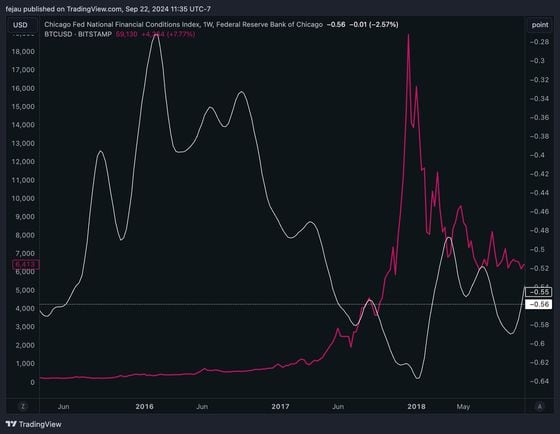
Most recently, Fejau notes that as financial conditions have loosened over the past twelve months, bitcoin has once again surged, climbing from $25,000 to over $73,000 in March 2024 even before global central banks started to cut interest rates. Which shows financial conditions have been loose for the past twelve months.
This relationship is not entirely straightforward, with other factors like the DXY index (a measure of the U.S. dollar's strength) also influencing bitcoin's trajectory. A rising DXY tends to have negative implications for bitcoin, as a stronger dollar makes speculative assets less attractive.
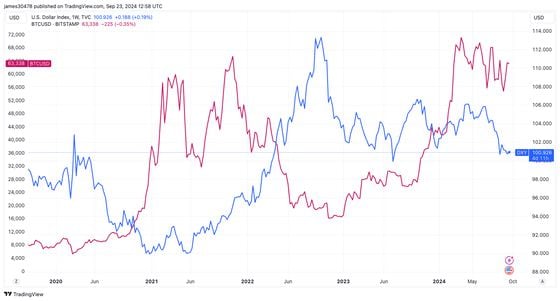
As financial conditions continue to ease, the outlook for bitcoin and other speculative investments could remain positive, provided other economic factors remain supportive.
免责声明:本文章仅代表作者个人观点,不代表本平台的立场和观点。本文章仅供信息分享,不构成对任何人的任何投资建议。用户与作者之间的任何争议,与本平台无关。如网页中刊载的文章或图片涉及侵权,请提供相关的权利证明和身份证明发送邮件到support@aicoin.com,本平台相关工作人员将会进行核查。




